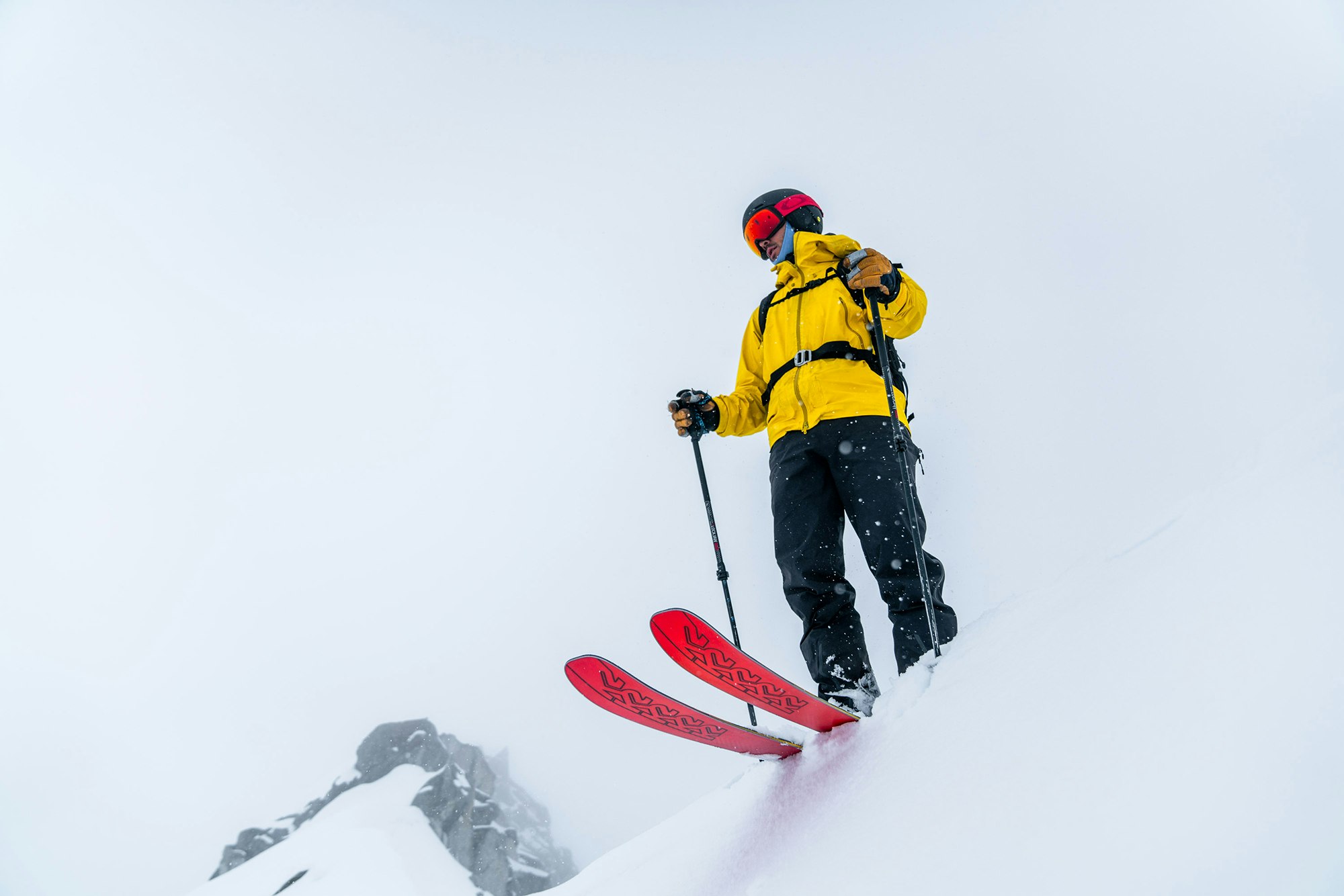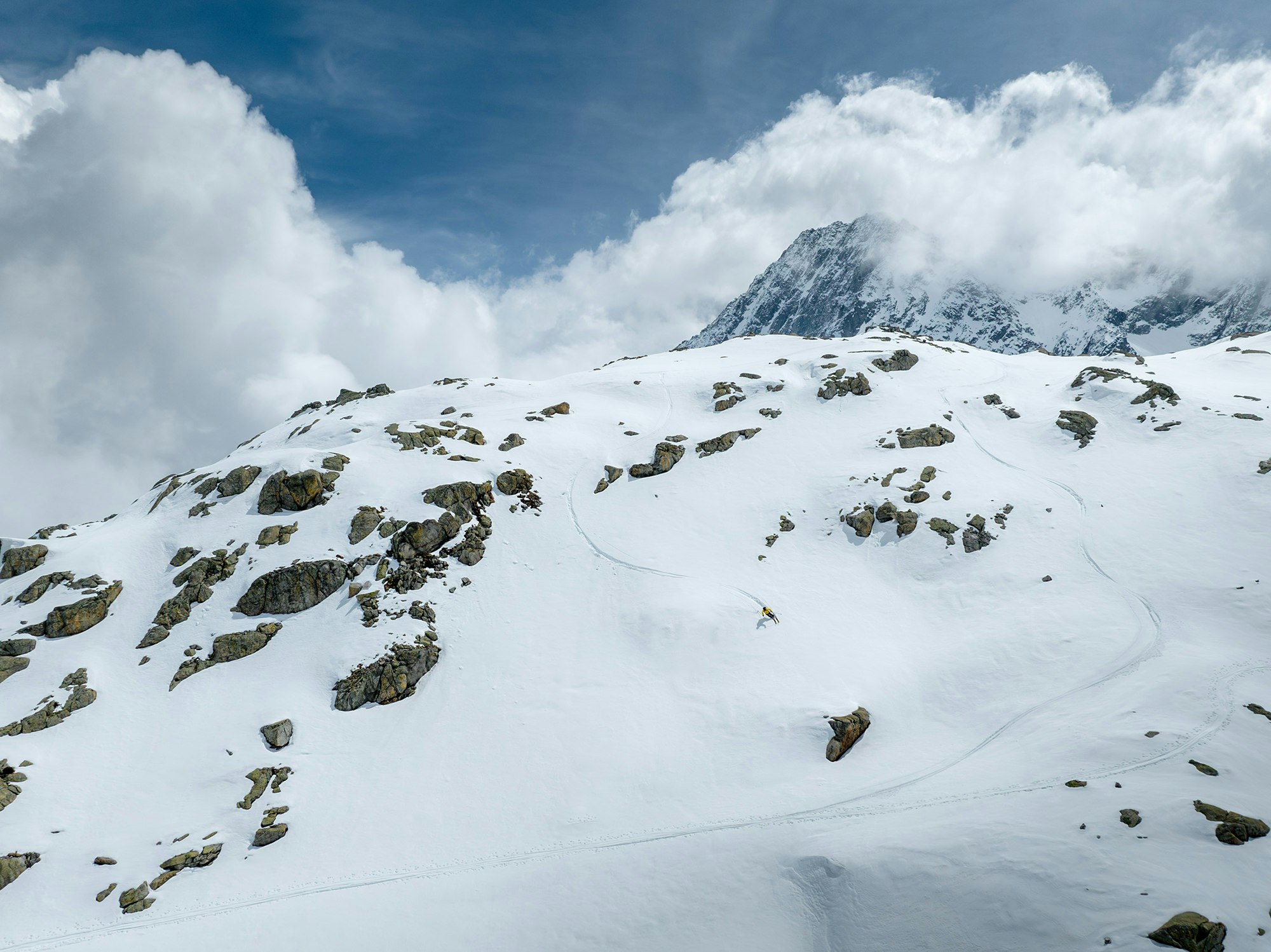Freedom of thought
How freeride ski, boots and bindings are changing
- Author: Niccolò Zarattini
- Photographer: Matteo Agreiter
Speed, stability, and safety for jumps and tricks. A mix of uphill skinning and lifts to reach virgin lines and pristine powder stashes, giving free rein to your every whim. It’s all about the downhill and calls for precise, responsive, beefy equipment.
Defining freeride is tricky, if not downright impossible. Attempting to do so is more than a little reductive. All sorts of people are drawn to it: groomer skiers, former groomer skiers and anti groomers. Then there are ski tourers, racers, runners who want to broaden their horizons, and anti-conformists who don’t belong to any group. There are those who take the lift and those who refuse to. Those who only go out on powder days, and those who wait until the avalanche risk is low. There are even those who claim to be freeriders, yet rarely leave the house. But they’re there in spirit. Perhaps the thing that they all have in common is a desire to express themselves, the ability to turn thoughts into action. Freeride is like art. You can understand it, force yourself to understand it, or misinterpret it. But it all comes down to interpretation. Freeriders are nothing more than interpreters. Interpreting the slope, the mountain, the line itself. You can aspire to the summit, the drop or the line of your dreams; you can stay inbounds or head out on an expedition on a mountain on another continent.

Here in Italy our pragmatic character has often reined in free expression, and skiing is no different. Alpine racing is still today entrenched as part of our mountain culture. Slowly slowly, however, we are broadening our horizons, and there are skiers coming up who embrace a modern philosophy of riding, where the whole mountain is your slope. In other categories, objectives are well-defined and shared by most skiers. With freeride there is no absolute truth: everything is true but so is its opposite. This is no cliche, it’s a simple fact; you just need to organize a trip to mountains further afield to realize it. The development of new materials has seen the market slowly shift towards ever lighter, more powerful equipment. For freeriding, this progress has led to longer tours that are technically more challenging than in the past. Once, only real athletes were able to take on certain routes, and some remained off limits for a long time, accessible only via helicopter. The new freeride revolution was born of the of the freedom to reach the remotest peaks in complete autonomy, alpine-style mountaineering is now possible on mountains across the globe. As well as lightweight plastics, woods, and metals, the focus is growing to include recycled and organically-derived materials.

All the major brands in the sector are aiming to reduce their carbon footprint, starting with finished and semi-finished components, that often visit several continents before arriving on the production line.
After all, climate change is having a huge effect on the ski industry, and it is up to brands in the sector to commit to reducing their impact on the environment. So, manufacturing offcuts are now being used to make sidewalls, as well as boot inserts and liners. Glues derived from petrochemicals have been replaced in many cases with new plant-based bio resins, which are also better for workers. It’s just the beginning, the dawn of a new era; we hope that it will lead to more a more sustainable life cycle for ski equipment.
Share this article

